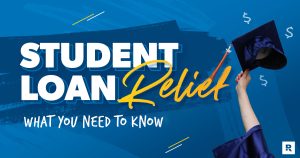Key takeaways
- Graduated repayment plans are based on the premise that your income will increase over time, allowing you to make larger payments as it occurs.
- Most federal student loans qualify for a graduated repayment plan.
- Consolidated and non-consolidated student loan graduate repayment plans are different.
If you take out federal student loans, you’re automatically enrolled in the standard repayment plan, which gives you consistent payments over 10 years. While it’s a common option, it’s not the only way to repay student loans. The graduated repayment plan is one alternative plan that starts your payments low and increases them over time.
How the graduated repayment plan works
Graduated plans slowly increase your monthly payment over time based on your expected income. You’ll still pay off your loans in 10 years (or up to 30 years if you’ve consolidated your loans). Your payments start lower and will typically increase every two years. Under this plan, your payments will never be less than the amount of interest that accrues on your payments. Your payments will also never be more than three times greater than they would be on any other repayment plan.
Graduated repayment for non-consolidated loans
If you choose the graduated repayment plan and you have a non-consolidated loan, the U.S. Department of Education will determine your payments. In general, your payments will start at around 50 percent of what you’d pay on the standard repayment plan and will finish at around 150 percent of what you’d pay on the standard repayment plan.
Graduated repayment for consolidated loans
If you have a consolidated loan, your payment timeline will look slightly different. If you have less than $7,500 in consolidated loans, your repayment period will still be 10 years. If you owe between $7,500 and $10,000, you’ll repay over 12 years. That repayment period increases the larger your total loan balance.
| Student loan debt | Repayment period |
|---|---|
| $0 to $7,500 | 10 years |
| $7,500 to $10,000 | 12 years |
| $10,000 to $20,000 | 15 years |
| $20,000 to $40,000 | 20 years |
| $40,000 to $60,000 | 25 years |
| $60,000 and up | 30 years |
The Department of Education’s Loan Simulator can help determine if the graduated repayment plan is a good option for your student loans. Consider your career and long-term income trajectory before enrolling to ensure the monthly payments will be manageable.
Which loans qualify for graduated repayment?
Most federal loans are eligible for the graduated repayment plan, including:
- Direct Subsidized Loans
- Direct Unsubsidized Loans
- Direct PLUS Loans
- Direct Consolidation Loans
- Subsidized Federal Stafford Loans
- Unsubsidized Federal Stafford Loans
- FFEL PLUS Loans
- FFEL Consolidation Loans
Is the graduated repayment plan a good idea?
The graduated repayment plan doesn’t operate like an income-driven repayment (IDR) plan. If your income doesn’t increase over time, you’ll still be on the hook for the increased payments near the end of your plan.
The graduated repayment plan is a good idea if:
- You’re expecting a steadily increased income. For entry-level workers, the graduated payment plan is a good option as you slowly start to earn more throughout your career.
- You want to be out of debt quickly. With some alternative repayment plans like IDR, your student loan debt could be with you for up to 25 years. The graduated repayment plan is ideal for borrowers who still want to stay on a 10-year timeline.
You should skip the graduated repayment plan if:
- You want low monthly payments. If you’re earning very little and aren’t anticipating your income to grow much, consider enrolling in an IDR. Your payments could be as low as $0, depending on your earnings and family size.
- You’re on track for PSLF. Only income-driven repayment plans are eligible for Public Service Loan Forgiveness. Since the graduated repayment plan isn’t eligible for PSLF, your payments made on graduated repayment won’t go towards forgiveness if you enroll later.
How to switch to the graduated repayment plan
If you’re on an income-driven repayment plan and want to switch to a graduated repayment plan, you can either fill out an application on the Federal Student Aid website or contact your loan servicer directly.
Next steps
If you’re thinking about choosing a graduated repayment plan, make sure that it’s in line with your predicted financial situation. Before enrolling in any repayment plan, make sure it meets your goals.
Consider when you want to have your loans paid off, how much in interest you are willing to pay and how much you can realistically pay each month. The Federal Student Aid Loan Simulator will help you choose the federal repayment plan based on your goals to pay down your balance at a pace that works for you.
Frequently asked questions
-
Unlike income-contingent and income-based plans, graduated payment plans are not automatically forgiven after 25 years of repayment. Graduated repayment plans are not eligible for Public Service Loan Forgiveness (PSLF).
-
Under a fixed repayment plan or standard repayment plan, your payments are the same for 10 years. This is the most aggressive payment plan, which allows you to pay off your loans completely in a decade.
Read the full article here












